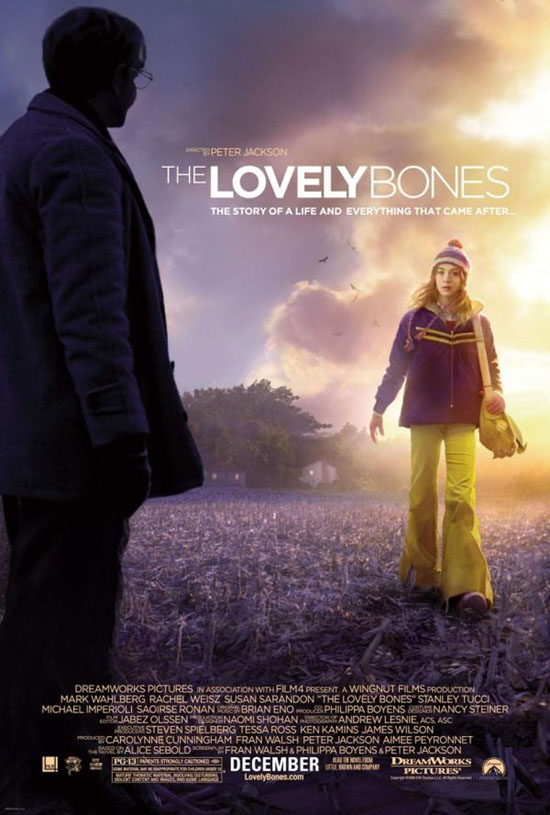
You won't be howling in horror, this wolf packs no bite...
Easily the most hyped horror film in recent memory, I awaited the appearance of the Wolfman with baiting breath at an advanced preview earlier this week. The horror genre has a distinct following, and the atypical horror fan was not to be found in this sold out screening. Packed with families and couples young and old, a distinctly mainstream audience was present. This is unusual for a genre which usually has its hardcore fans of blood-thirsty hormonal adolescents and gore hounds. Universal have had this picture in the pipe-line for four years, clearly determined to start a new horror franchise. Last minute editing, script changes, and a huge marketing push left me anxious to see the finished product. I left, along with the other few hundred patrons, glad to have seen the film at a free screening, as it is not worth the money.
Gothic horror has seen a recent revival in recent years so a re-make of Universal’s 1940s classic comes as no surprise. Horror comes in waves, usually playing on our current fears in society. The last decade we’ve had a string of Asian horror remakes (The Ring, The Grudge), the revival of 1970s exploitation cinema dubbed ‘torture porn’ (Hostel, Saw) and a gothic revival. The former two have seen some excellent examples of the horror genre; the latter has seen the likes of the Underworld Trilogy, Constantine, Dorian Grey and a barrage of Vampire films. Few of these are good films, and The Wolfman, fitting nicely into this cannon, has little to live up too. Despite this, as a fantasy horror film it is sub-standard.
The films style, script, acting, direction and achievement in horror is best described as creaky. Like a haunted house, a staple of classic horror, it immediately begins to fall apart from the outset. Probably due to the pressure of creating a hit, and beginning a franchise, the film went through rigorous re-writes and re-editing resulting in a very uneven tone. It doesn’t know whether to be gory fun, poignant drama or a dark and atmospheric chiller.
The film beings with Benicio Del Toro’s character Lawrence Talbot returning to England after hearing about his brothers mysterious death. Staying with his brother’s widow Gwen, and his father, played by a grouchier than usual Anthony Hopkins, he quickly discovers that his brother was killed by a Werewolf. In an attack, he is bitten, the full moon occurs, and you can pretty much work out the rest as Talbot turns from stately investigator to hairy killer.
Joe Johnson is used to dealing with monsters in his films. The creatures that chased the young children in his hit 90s film Jumangi terrified me as a child, and his dinosaur on dinosaur fights in Jurassic Park 3 saved an otherwise tedious film. It is a shame that he managed to squeeze more tension and scares into a PG rated family film, that in this ‘adult’ horror. In an attempt to break from his kid friendly image, and in keeping with the traits of gothic horror, Johnson squeezes a fair bit of blood and guts into his wolf attacks. As a horror fan I lapped it up. There are decapitations, disembowelments and flesh ripping a ‘plenty. These moments are what fun horror cinema is about, and for a brief moments the film almost reaches the heights of the ultimate lycanthrope film An American Werewolf in London. However, not satisfied to be a fun horror, it is weighted down with false aspirations of being a gothic classic, which it most certainly is not.
Between these brief moments of fury are long lulls which attempt to give humanity to the characters and inspire pathos in the audience. Horror can be fun, it can also be moving, but Wolfman is not. Underneath the hokey affects and melodrama, the classic Monsters which dominated Universals line-up in the 1940s such as Frankenstein, Dracula, and the original Wolfman had real sadness to them. Johnson clearly intends for this to occur in his film too. Talbot’s relationship with Gwen turns from compassion to love, and the relationship between father and son turns sour, all further complicated by his furry disorder. One twist that occurs in the film's third act is laughable and predictable, taking the film from fun, too boring, to plain silly. Talbot’s love interest is never fully explored and we are meant to just believe in their relationship which has no real substance.
Their only intimate scene involves skipping stones across a lake, is that an indication of their undying love for each other?
Similarly reduced until all sense is lost is Talbot’s containment in an asylum for the insane, a staple feature in Gothic literature. This seems to have been included simply as a tribute to the genre and is condensed into a montage showing brief glimpses of ill-treatment. This does lead to an effective set piece where Talbot explores his animalistic urges eating up all those that doubted his sanity. Here the glimpses of the fun horror returns, but is too short lived.
Returning to the father and son relationship, it could have been deeply explored. Revelations come steadily leading Talbot to question his father’s intentions and possible involvement in his own mother’s death. It all climaxes in a melodramatic tirade with Hopkins turning into a pantomime baddie shouting and ranting throughout his mansion. Any underlying sadness is under shadowed by over-blown emotion and theatrics. The acting saviour of the film is Hugo Weaving as an Inspector Abberline, who doubts the Werewolf rumours until the last possible moment. He is conniving and slick, a Sherlock Holmes for horror, but is grossly underused in the script.
The key element of gothic horror, one which could have been the saving grace of the film is the atmosphere. Tim Burton is the expert in this field, and the film owes a debt to him, not least due to Danny Elfman’s hauntingly familiar soundtrack. The film gets weighed down in ropey C.G.I, cheapening the Werewolf transformations and making the dark style too heavy handed. It does not fall into the pitfalls of Underworld at least which has a shooting style so dark that you need night vision goggles to tell what’s coming on. Woodlands, fire, mansions, all the elements of gothic horror are present, but none are used in a manner which induces fear or wonderment. Without a convincing foreboding tone, the feat factor fails to work. A few simple ‘boo’ moments are done affectively, but making someone jump is the easiest thing to do in horror. Loud music, a sudden movement, may make you scream and laugh, but far more effective are those rare horror films that get under your skin through psychological involvement. This is a far too simple film to achieve that.
Big budget Hollywood horror is a rarity and maybe it should stay that way. The Wolfman has the gore, but its uneven tone and pacing removes any suspense, fear or poignancy. The climax is reduced to a long cat and mouse chase that is devoid of tension, and like most of the film, the ending is rushed and soulless. Too overblown to be fun, too serious to be scary; I hate to say it Universal, but this may be one franchise you may want to have the vet put down.
Many thanks to Dean Clatworthy for the preview tickets: visit www.deanclatworthy.com. For an alternative take on the film, check out my post-graduate buddy Adam Sidaway’s blog at www.sidawayretreospective.blogspot.com







